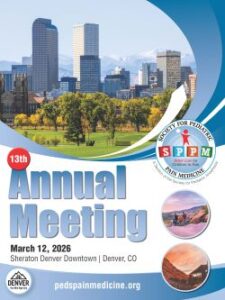{“questions”:{“udsd0”:{“id”:”udsd0″,”mediaType”:”image”,”answerType”:”text”,”imageCredit”:””,”image”:””,”imageId”:””,”video”:””,”imagePlaceholder”:””,”imagePlaceholderId”:””,”title”:”A 7-year-old girl, born with microtia (grade III), undergoes an external ear reconstructive surgery. The cartilage for the reconstruction is harvested from 5th to 7th costal cartilages of the right side. Her past medical history is significant for developmental delay and moderate obstructive sleep apnea. For intraoperative pain management, IV ibuprofen and acetaminophen is used. After an uneventful intraoperative period, the patient is transferred to the postoperative area. Two hours later, she begins to experience significant pain over the donor site. She is crying inconsolably and is unable to move. The pain is worsened with deep inspiration. The family has a history of substance use disorder and is very concerned about the use of opioids. Which of the following is most likely the best approach for managing pain in this child?”,”desc”:””,”hint”:””,”answers”:{“j0qhe”:{“id”:”j0qhe”,”image”:””,”imageId”:””,”title”:”A.\tStart continuous intravenous morphine”},”5ou1i”:{“id”:”5ou1i”,”image”:””,”imageId”:””,”title”:”B.\tRegional anesthesia with ultrasound-guided External Oblique Intercostal Block (EOIB) + Serratus Anterior Plane Block (SAPB)”,”isCorrect”:”1″},”vu3lq”:{“id”:”vu3lq”,”image”:””,”imageId”:””,”title”:”C.\tOral Tramadol as needed”},”9z30e”:{“id”:”9z30e”,”image”:””,”imageId”:””,”title”:”D.\tUse a patient-controlled analgesia (PCA) pump”}}}},”results”:{“661rg”:{“id”:”661rg”,”title”:””,”image”:””,”imageId”:””,”min”:”0″,”max”:”1″,”desc”:””,”redirect_url”:”https:\/\/pedspainmedicine.org\/wp-content\/uploads\/2025\/09\/SPPM-QOM-September-2025.pdf”}}}
Question of the Month – August 2025
{“questions”:{“6xn1l”:{“id”:”6xn1l”,”mediaType”:”image”,”answerType”:”text”,”imageCredit”:””,”image”:””,”imageId”:””,”video”:””,”imagePlaceholder”:””,”imagePlaceholderId”:””,”title”:”A 16-year-old patient presents with a history of severe pain in her R leg that persists several months after twisting her ankle during basketball. She reports pain in her right foot without allodynia, hyperalgesia, temperature or skin changes, but with significant swelling and motor impairment. She is walking with a crutch as she is unable to weight-bear on her right leg. She is seen by the multidisciplinary pain clinic and undergoes a unilateral lumbar sympathetic block under general anesthesia. After receiving the block and waking up from anesthesia, her pain is resolved, but now she states that she can\u2019t feel or move either of her legs. She gets an MRI, is evaluated by neurology, and is diagnosed with Functional Neurological Symptom Disorder. What is the definition of FNSD and how might you describe it to a patient?”,”desc”:””,”hint”:””,”answers”:{“po3jx”:{“id”:”po3jx”,”image”:””,”imageId”:””,”title”:”A.\tThis is a condition in which there is no easily identifiable structural damage where communication between the brain and the body is disrupted resulting in motor, sensory, or cognitive symptoms that are real, but not dangerous in the sense they do not come from acute damage or disease”,”isCorrect”:”1″},”awtfq”:{“id”:”awtfq”,”image”:””,”imageId”:””,”title”:”B.\tThis is another name for conversion disorder, which is a physical manifestation of psychological or emotional distress”},”8w4hi”:{“id”:”8w4hi”,”image”:””,”imageId”:””,”title”:”C.\tThis is a diagnosis of exclusion, where symptoms are present that cannot be explained by any other diagnosis”},”eof5z”:{“id”:”eof5z”,”image”:””,”imageId”:””,”title”:”D.\tWhen a person changes their behavior or demonstrates symptoms purposefully for secondary gain”},”ypkw7″:{“id”:”ypkw7″,”image”:””,”imageId”:””,”title”:”E.\tAll of the above”}}}},”results”:{“oykrq”:{“id”:”oykrq”,”title”:””,”image”:””,”imageId”:””,”min”:”0″,”max”:”1″,”desc”:””,”redirect_url”:”https:\/\/pedspainmedicine.org\/wp-content\/uploads\/2025\/08\/SPPM-QOM-August-2025.pdf”}}}
Question of the Month – July 2025
{“questions”:{“zsy01”:{“id”:”zsy01″,”mediaType”:”image”,”answerType”:”text”,”imageCredit”:””,”image”:””,”imageId”:””,”video”:””,”imagePlaceholder”:””,”imagePlaceholderId”:””,”title”:”A 15-year-old boy is undergoing an ACL reconstruction. He is otherwise healthy and has no\r\nrelevant past medical history.
Question of the Month – June 2025
{“questions”:{“i2ecu”:{“id”:”i2ecu”,”mediaType”:”image”,”answerType”:”text”,”imageCredit”:””,”image”:””,”imageId”:””,”video”:””,”imagePlaceholder”:””,”imagePlaceholderId”:””,”title”:”A 12\u2011year\u2011old male with a known history of congenital methemoglobinemia presents for bilateral inferior alveolar nerve blocks to facilitate extraction of multiple impacted molars. He has no prior anesthetic history and is otherwise healthy. His preoperative hemoglobin is 14.6\u202fg\/dL, and his baseline methemoglobin level ranges from 2\u202f% to 14\u202f%. Which of the following is the most appropriate anesthetic management strategy for this patient?”,”desc”:””,”hint”:””,”answers”:{“a3w84”:{“id”:”a3w84″,”image”:””,”imageId”:””,”title”:”A.\tProceed with bilateral inferior alveolar nerve blocks using 4\u202f% prilocaine with epinephrine, without additional monitoring.”},”iphqx”:{“id”:”iphqx”,”image”:””,”imageId”:””,”title”:”B.\tAvoid all local anesthetics and use GA with volatile anesthetics.”},”eszcg”:{“id”:”eszcg”,”image”:””,”imageId”:””,”title”:”C.\tPerform the nerve blocks under ultrasound guidance using ropivacaine, implement continuous or serial methemoglobin monitoring, and have methylene blue immediately available.”,”isCorrect”:”1″},”p1pwb”:{“id”:”p1pwb”,”image”:””,”imageId”:””,”title”:”D.\tUse topical benzocaine spray to supplement a single-shot inferior alveolar block to minimize injection volume.”}}}},”results”:{“33uwr”:{“id”:”33uwr”,”title”:””,”image”:””,”imageId”:””,”min”:”0″,”max”:”1″,”desc”:””,”redirect_url”:”https:\/\/pedspainmedicine.org\/wp-content\/uploads\/2025\/06\/SPPM-QOM-June-2025.pdf”}}}
Question of the Month – May 2025
{“questions”:{“opejj”:{“id”:”opejj”,”mediaType”:”image”,”answerType”:”text”,”imageCredit”:””,”image”:””,”imageId”:””,”video”:””,”imagePlaceholder”:””,”imagePlaceholderId”:””,”title”:”A 7-year-old boy (24 kg) undergoes extensive bilateral lower-extremity orthopedic surgery. Epidural catheter placement under general anesthesia proves technically difficult, requiring several needle passes before a catheter is threaded. Twenty-four hours later he develops a bifrontal, throbbing headache with vomiting that is immediately relieved when supine and recurs on sitting or standing. Conservative therapy\u2014including IV fluids, oral caffeine citrate, acetaminophen, ketorolac, and continuation of the local anesthetic infusion through the catheter\u2014fails to provide durable relief. The parents are hesitant about further neuraxial procedures and ask whether any less-invasive options exist before proceeding to an epidural blood patch.
- 1
- 2
- 3
- …
- 11
- Next Page »
 SPPM 13th Annual Meeting
SPPM 13th Annual Meeting